Selection of Magnetic Pulse Crimping Process Conditions to Improve Crimped Terminal Quality
Abstract
:1. Introduction
2. MPC Process
3. Experimental Procedure
4. Numerical Procedure
5. Results and Discussion
5.1. Compression Ratio
5.2. Pullout Strength of Crimped Part
5.3. Contact Resistance and Temperature
6. Conclusions
- (1)
- The effect of crimped length on crimped terminal quality was analyzed for the first time. When the crimped length was 10 mm in the MPC process, the maximum values of the compression ratio and pullout strength of MPC were 32.3% and 3.147 kN, respectively.
- (2)
- The electromagnetic–mechanical FE-model was developed to analyze the MPC process; the simulation results were in good agreement with the experimental deformation results. To employ the developed FE-model, the effect of concentrator length and the effect of charge energy on the crimped terminal were quantitatively analyzed. The achieved distribution of electromagnetic force on crimped terminal can be applied as fundamental data to terminals of similar shape.
- (3)
- The effect of crimping length on MPC crimped parts was investigated using two types of concentrator, with crimping lengths of 10 mm and 14 mm. With increases in the concentrator length, the quality of crimped parts decreased sharply. From the simulation results, it was confirmed that the electromagnetic force decreased by 20% at a concentrator length of 14 mm.
- (4)
- The effect of charge energy on MPC crimped parts was measured according to variation in charge energy. With the increase in charge energy from 20 kJ to 24 kJ, the compression ratio and pullout strength increased. The simulation results confirmed that the electromagnetic force increased by 30% as the charge energy increased.
- (5)
- High-quality MPC crimped parts can be obtained by reducing the crimping length and increasing the charge energy. When applying the MPC process on site, the most significant values were the contact resistance and temperature. The results show that, to achieve high-quality crimped terminals, increasing the charge energy is a more effective method than reducing the crimping length.
- (6)
- Although 26 kJ electrical energy was employed for terminal crimping, the lowest pull-out strength was measured because a portion of wire strands adjacent to the edge of the terminal were squashed. This result shows that selection of proper charging energy is the most important factor for achieving high-quality crimped terminals. These results can contribute to the design of MPC processes for many kinds of crimping components in various industries.
Author Contributions
Funding
Data Availability Statement
Conflicts of Interest
References
- Rhodes, E. Electrical contacts. Nature 1946, 158, 647. [Google Scholar] [CrossRef]
- Shim, J.Y.; Kang, B.Y. Development of Cable Lug Joint Using Electromagnetic Force. J. Korean Soc. Manuf. Technol. Eng. 2013, 22, 156–161. [Google Scholar] [CrossRef]
- Jongwuttanaruk, K.; Thavornwat, C. Optimization of Mechanical Crimping in the Terminal Crimping Process Using a Response Surface Methodology. Adv. Mater. Sci. Eng. 2022, 2022, 6508289. [Google Scholar] [CrossRef]
- Magnetic Pulse Crimping and High Power Solutions; SAE Technical Paper; SAE International: Warrendale, PA, USA, 2015; pp. 4–14. [CrossRef]
- Zhmurkin, D.V.; Corman, N.E.; Copper, C.D.; Hilty, R.D. 3-Dimensional numerical simulation of open-barrel crimping process. In Proceedings of the 54th IEEE Holm Conference on Electrical Contacts, Orlando, FL, USA, 27–29 October 2008; pp. 178–184. [Google Scholar] [CrossRef]
- Weddeling, C.; Demir, O.K.; Haupt, P.; Tekkaya, A.E. Analytical methodology for the process design of electromagnetic crimping. J. Mater. Process. Technol. 2015, 222, 163–180. [Google Scholar] [CrossRef]
- Yin, Z.; Park, J.G.; Choi, H.S.; Kim, Y.S. Quality Improvement for Crimping Process of Electrical Connector Using FEM Analysis. Trans. Mater. Process. 2009, 18, 229–235. [Google Scholar] [CrossRef]
- Li, P.; Liu, G.; Wang, P.; Huang, G.; Yu, Z.; Xiu, H.; Tian, C. Numerical and experimental study on the relationship between pull out force and indentation depth of aviation wire crimp terminal. Sci. Rep. 2022, 12, 21939. [Google Scholar] [CrossRef] [PubMed]
- Heggemann, T.; Psyk, V.; Oesterwinter, A.; Linnemann, M.; Kräusel, V.; Homberg, W. Comparative Analysis of Electrohydraulic and Electromagnetic Sheet Metal Forming against the Background of the Application as an Incremental Processing Technology. Metals 2022, 12, 660. [Google Scholar] [CrossRef]
- Ali, N.; Sharma, S.K.; Chebolu, R.; Nallu, R.; Sharma, A. Experimental investigations on magnetic pulse crimping of copper lug. Eng. Res. Express 2023, 5, 015055. [Google Scholar] [CrossRef]
- Rajak, A.K.; Kore, S.D. Numerical simulation and experimental study on electromagnetic crimping of aluminium terminal to copper wire strands. Electr. Power Syst. Res. 2018, 163, 744–753. [Google Scholar] [CrossRef]
- Shen, T.; Li, C.; Zhou, Y.; Wu, H.; Wang, X.; Xu, Q. The effect of assembly of coil and field shaper on electromagnetic pulse crimping. Energy Rep. 2022, 8, 1243–1248. [Google Scholar] [CrossRef]
- Saxena, R.; Sharma, S.K. Investigation of pulse power technology for crimping of electrical cables. In Proceedings of the 2021 IEEE 2nd International Conference on Applied Electromagnetics, Signal Processing, & Communication (AESPC), Bhubaneswar, India, 26–28 November 2021. [Google Scholar] [CrossRef]
- Weddeling, C.; Walter, V.; Haupt, P.; Tekkaya, A.E.; Schulze, V.; Weidenmann, K.A. Joining zone design for electromagnetically crimped connections. J. Mater. Process. Technol. 2015, 225, 240–261. [Google Scholar] [CrossRef]
- Mentec, R.L.; Sow, C.T.; Heuzé, T.; Patrick, R.; Racineux, G. Electrohydraulic Crimping of Tubes within Rings. Metals 2023, 13, 1382. [Google Scholar] [CrossRef]
- Shim, J.Y.; Kang, B.Y.; Kim, I.S. Characteristics of Al/steel magnetic pulse tubular joint according to discharging time. J. Mech. Sci. Technol. 2017, 31, 3793–3801. [Google Scholar] [CrossRef]
- Rajak, A.K.; Kore, S.D. Experimental investigation of aluminum–copper wire crimping with electromagnetic process: Its advantages over conventional process. J. Manuf. Process. 2017, 26, 57–66. [Google Scholar] [CrossRef]
- Hallquist, J.O. LS-DYNA Theoretical Manual; Livermore Software Technology Corporation: Livermore, CA, USA, 1991. [Google Scholar]
- Sobolev, A.V.; Radchenko, M.V. Use of Johnson–Cook plasticity model for numerical simulations of the SNF shipping cask drop tests. Nucl. Energy Technol. 2016, 2, 272–276. [Google Scholar] [CrossRef]
- Rajak, A.K.; Kore, S.D. Electromagnetic Hemming of Aluminum Sheets Using FEM; Atlantis Press: Amsterdam, The Netherlands, 2017; pp. 77–82. [Google Scholar] [CrossRef]
- Rajak, A.K.; Kore, S.D. Comparison of different types of coil in Electromagnetic terminal-wire crimping process: Numerical and experimental analysis. J. Manuf. Process. 2018, 34, 329–333. [Google Scholar] [CrossRef]
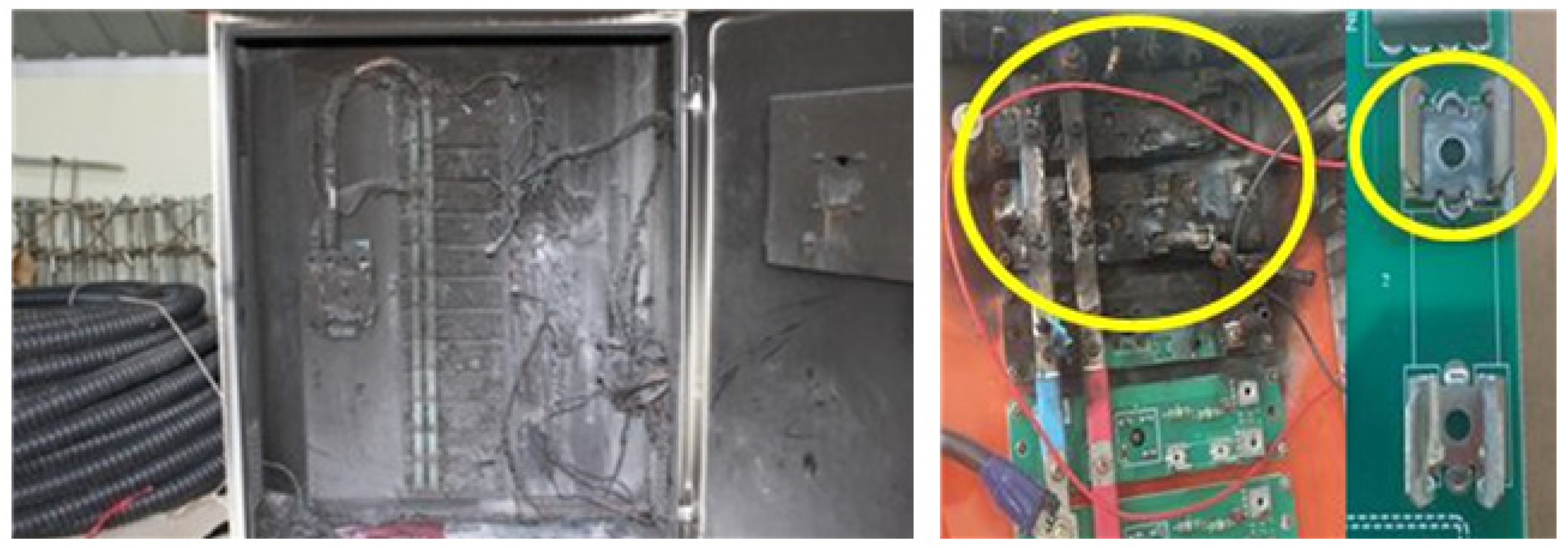




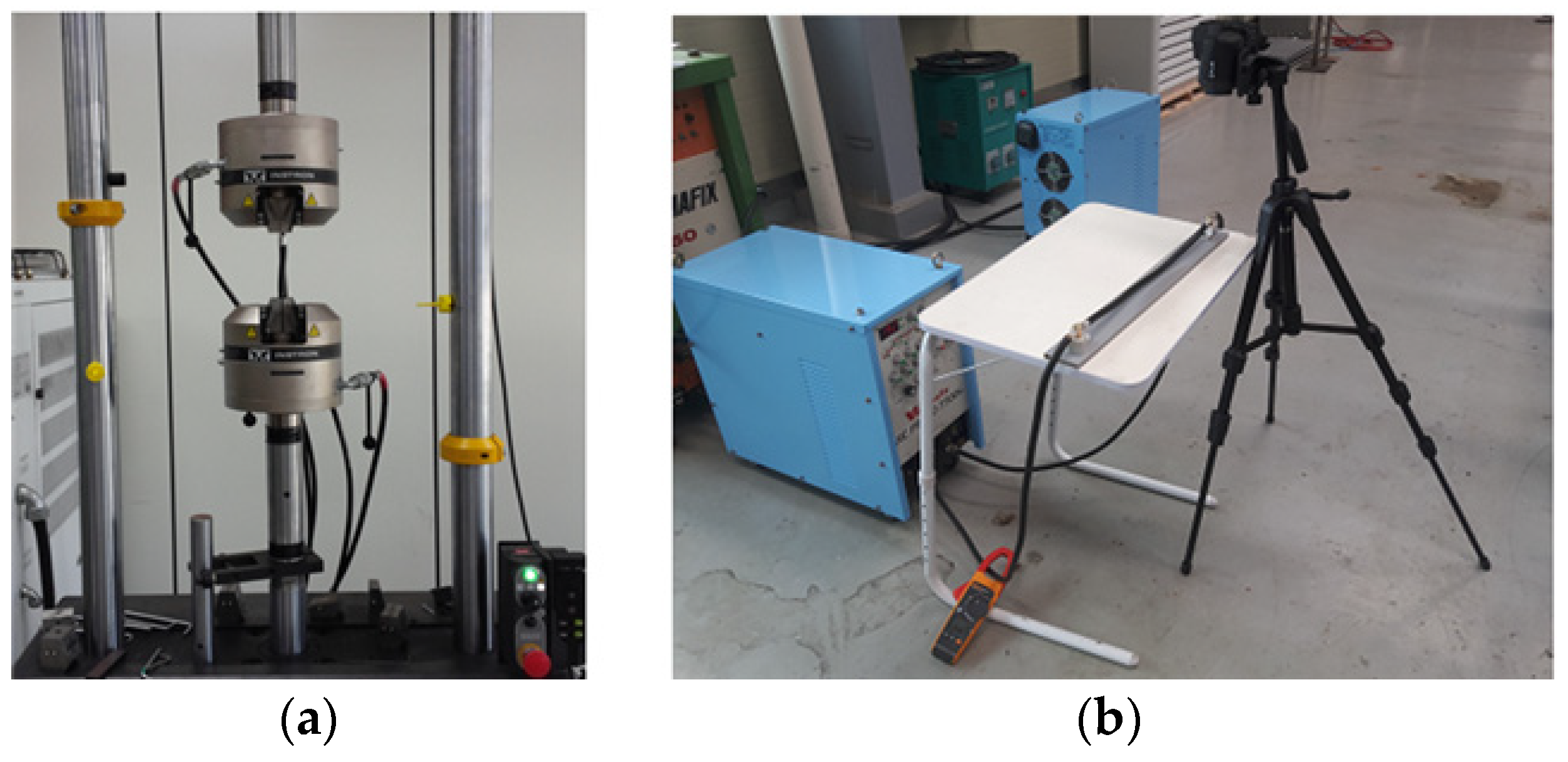



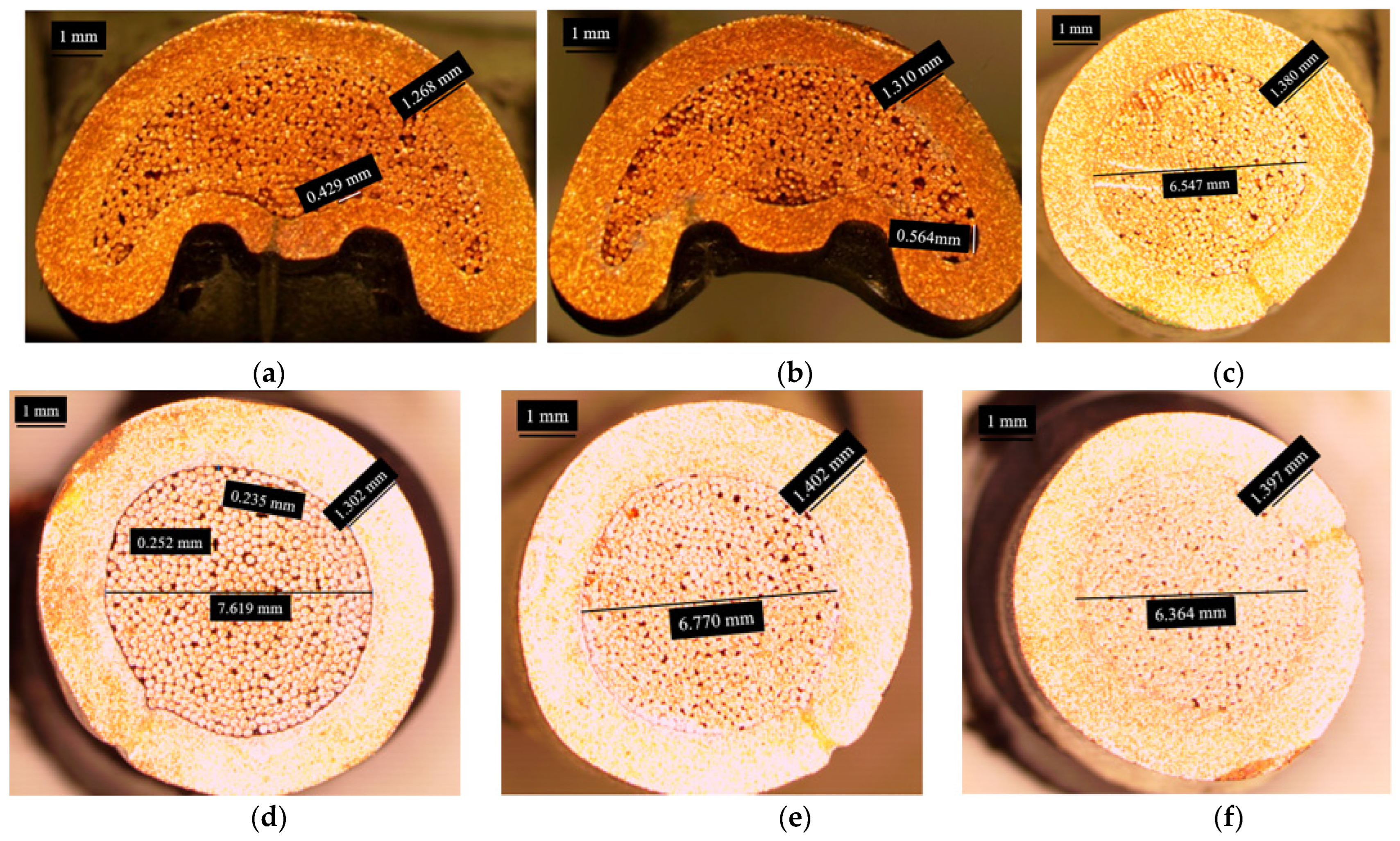
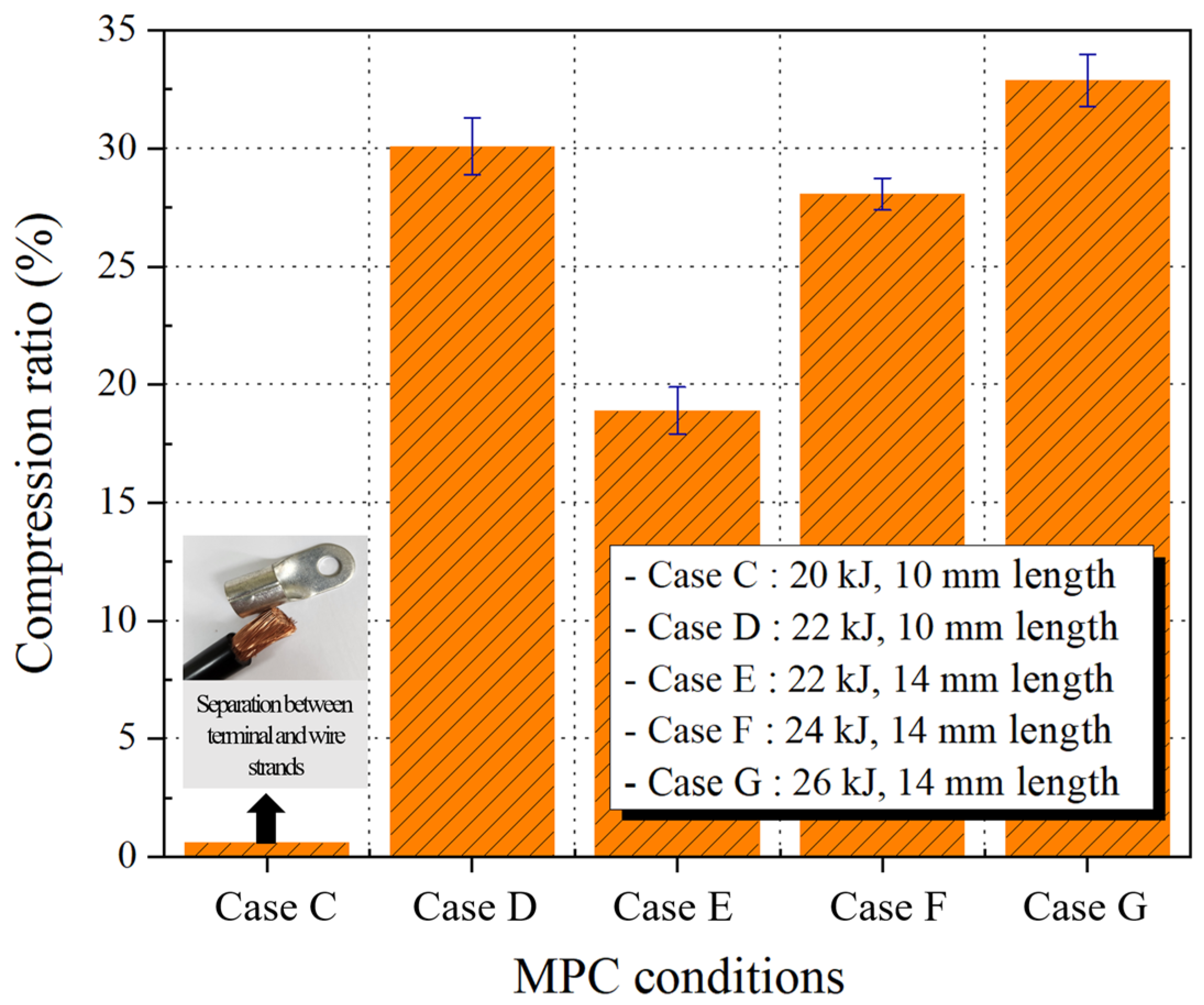
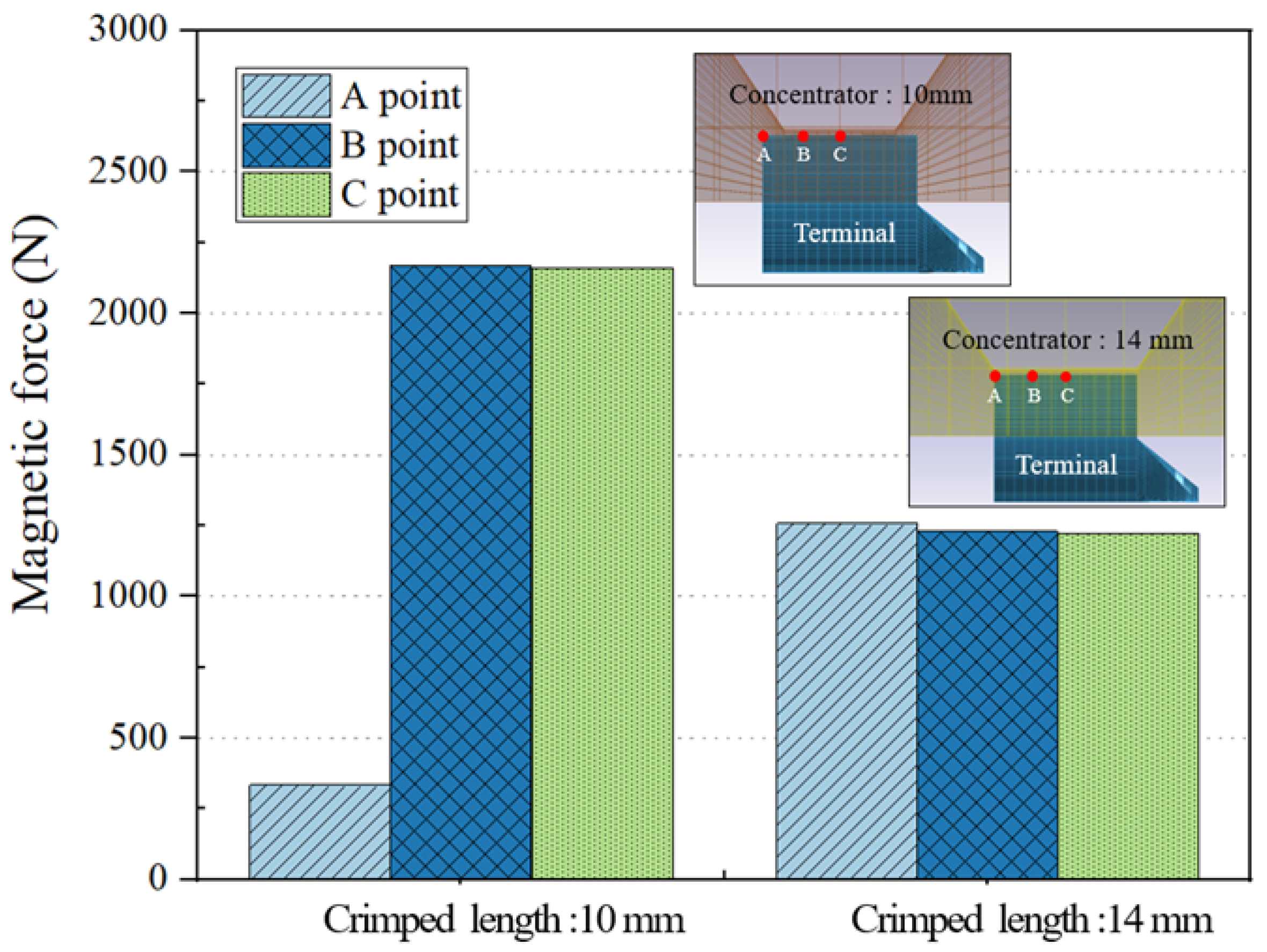
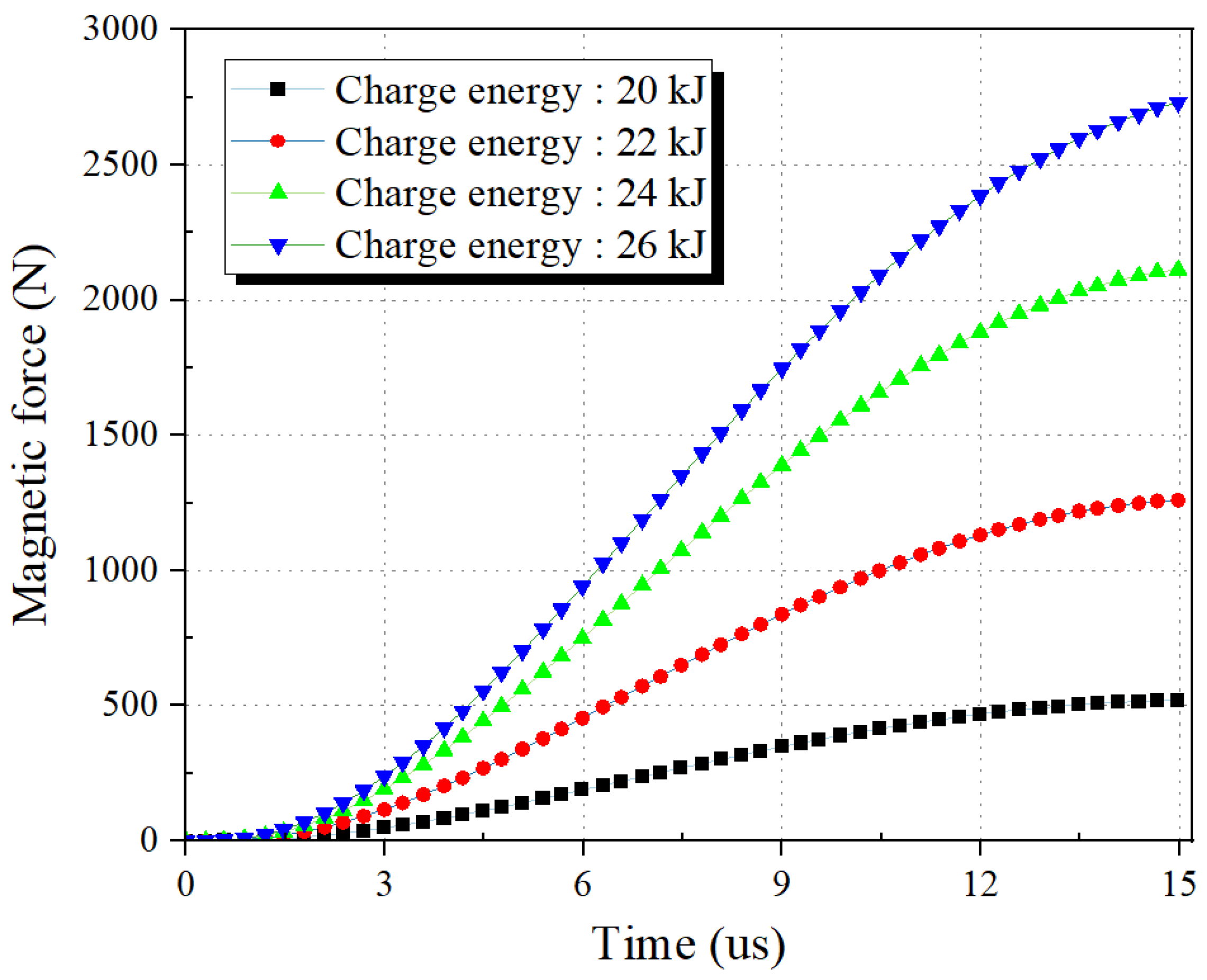
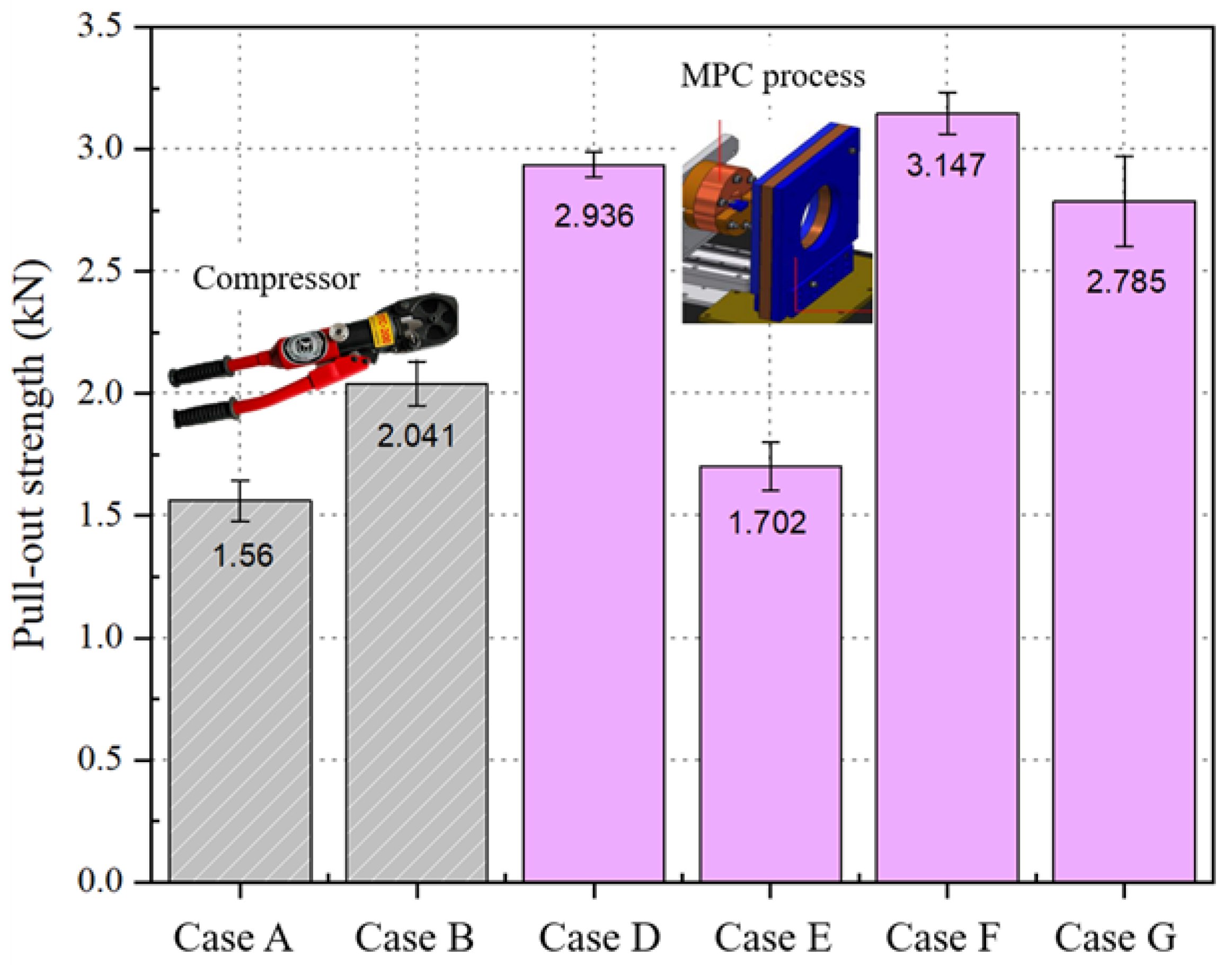

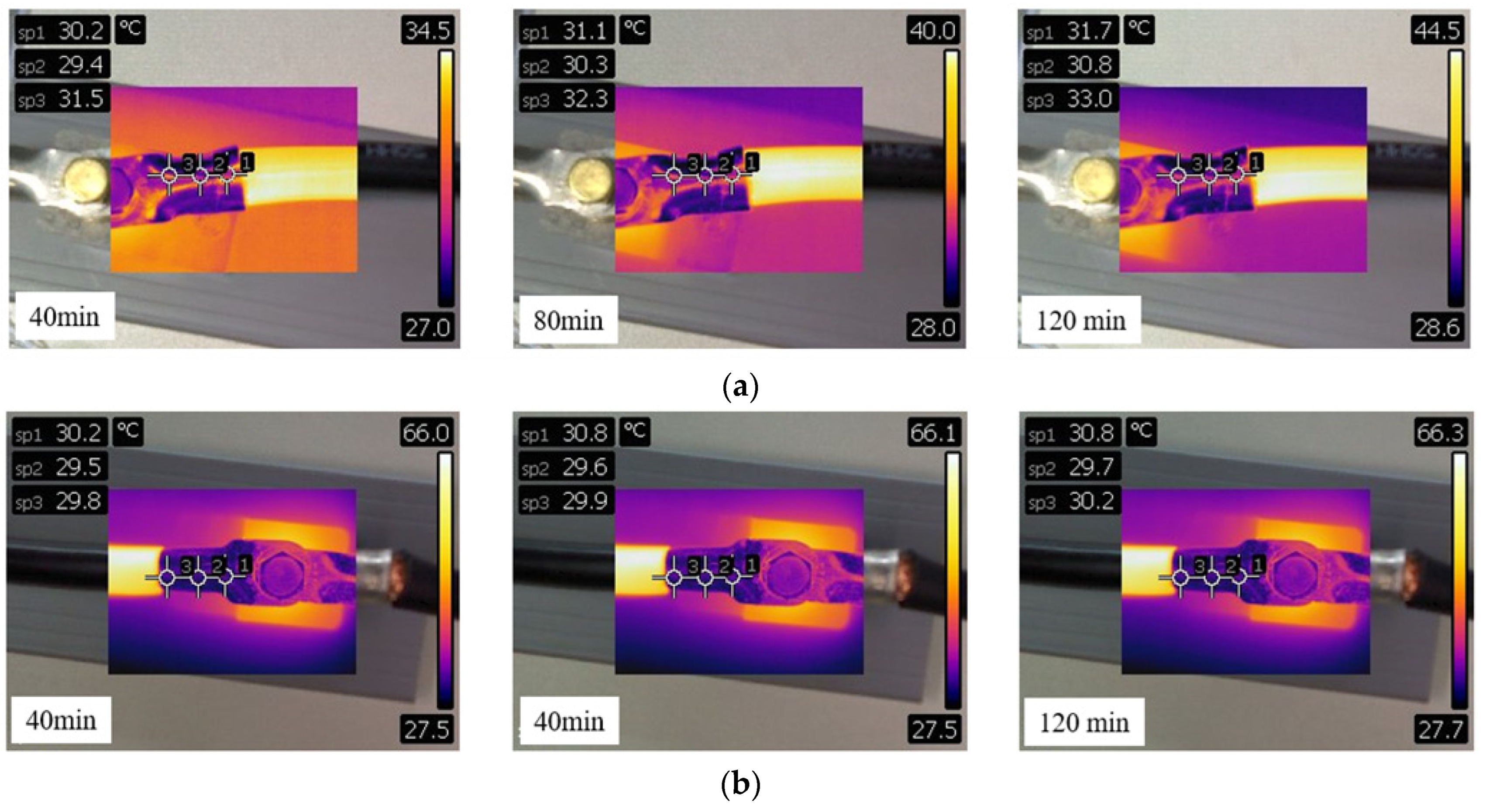
| Crimping Process | Charge Voltage (kV) | Charge Energy (kJ) | Crimping Length (mm) | |
|---|---|---|---|---|
| Case A | Compressor | - | - | 10 |
| Case B | - | - | 14 | |
| Case C | MPC | 8.2 | 20 | 10 |
| Case D | 8.5 | 22 | 10 | |
| Case E | 8.5 | 22 | 14 | |
| Case F | 8.9 | 24 | 14 | |
| Case G | 9.2 | 26 | 14 |
| Mechanical and Electrical Properties | |||||||||
|---|---|---|---|---|---|---|---|---|---|
| Density (kg/m3) | Modulus of Elasticity (GPa) | Poisson’s Ratio | Thermal Conductivity () | Electrical Resistivity () | |||||
| 8960 | 124 | 0.27 | 588 | ||||||
| Johnson–Cook material constant parameter | |||||||||
| A (MPa) | B (MPa) | n | C | Tm (K) | m | ||||
| 90 | 292 | 0.31 | 0.025 | 1331 | 1.09 | ||||
| Crimping Process | Charge Energy (kJ) | Crimping Length (mm) | Contact Resistance ( ) | |
|---|---|---|---|---|
| Case A | Compressor | - | 10 | 34.1 |
| Case B | - | 14 | 32.3 | |
| Case C | MPC | 20 | 10 | - |
| Case D | 22 | 10 | 26.1 | |
| Case E | 22 | 14 | 30.8 | |
| Case F | 24 | 14 | 24.8 | |
| Case G | 26 | 14 | 23.1 |
Disclaimer/Publisher’s Note: The statements, opinions and data contained in all publications are solely those of the individual author(s) and contributor(s) and not of MDPI and/or the editor(s). MDPI and/or the editor(s) disclaim responsibility for any injury to people or property resulting from any ideas, methods, instructions or products referred to in the content. |
© 2023 by the authors. Licensee MDPI, Basel, Switzerland. This article is an open access article distributed under the terms and conditions of the Creative Commons Attribution (CC BY) license (https://creativecommons.org/licenses/by/4.0/).
Share and Cite
Kim, M.; Shim, J. Selection of Magnetic Pulse Crimping Process Conditions to Improve Crimped Terminal Quality. Metals 2023, 13, 1903. https://doi.org/10.3390/met13111903
Kim M, Shim J. Selection of Magnetic Pulse Crimping Process Conditions to Improve Crimped Terminal Quality. Metals. 2023; 13(11):1903. https://doi.org/10.3390/met13111903
Chicago/Turabian StyleKim, Minseok, and Jiyeon Shim. 2023. "Selection of Magnetic Pulse Crimping Process Conditions to Improve Crimped Terminal Quality" Metals 13, no. 11: 1903. https://doi.org/10.3390/met13111903
APA StyleKim, M., & Shim, J. (2023). Selection of Magnetic Pulse Crimping Process Conditions to Improve Crimped Terminal Quality. Metals, 13(11), 1903. https://doi.org/10.3390/met13111903






